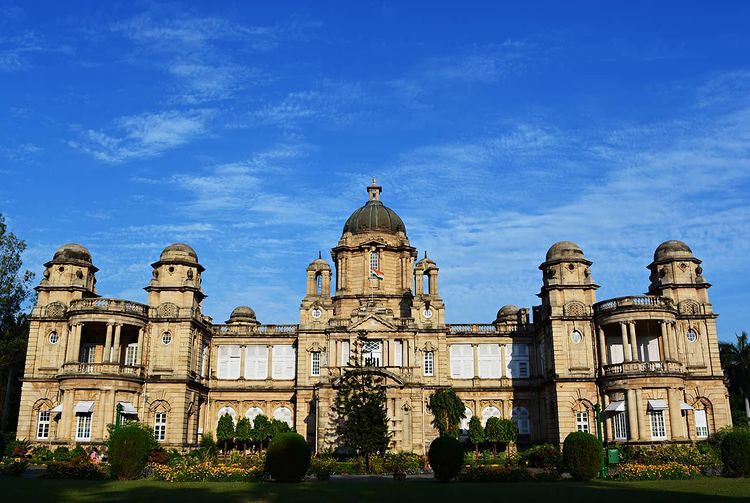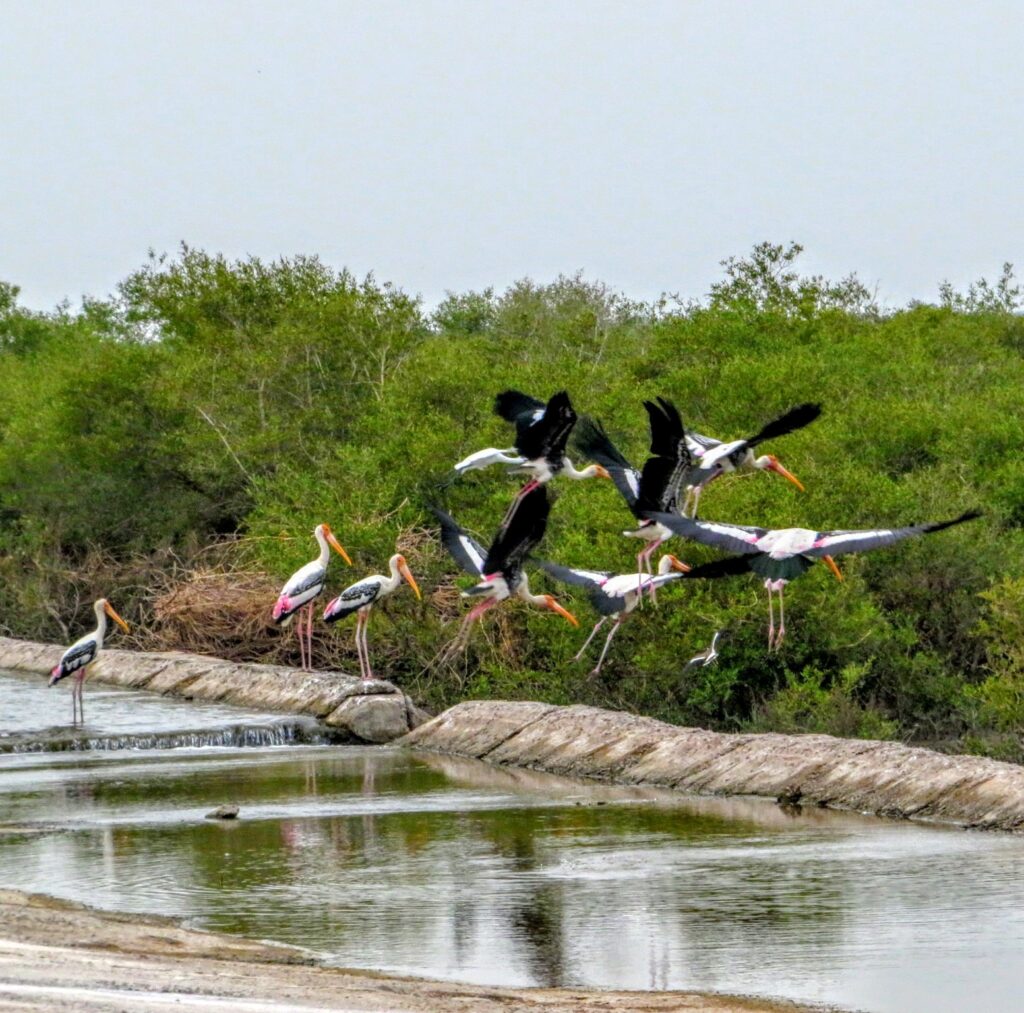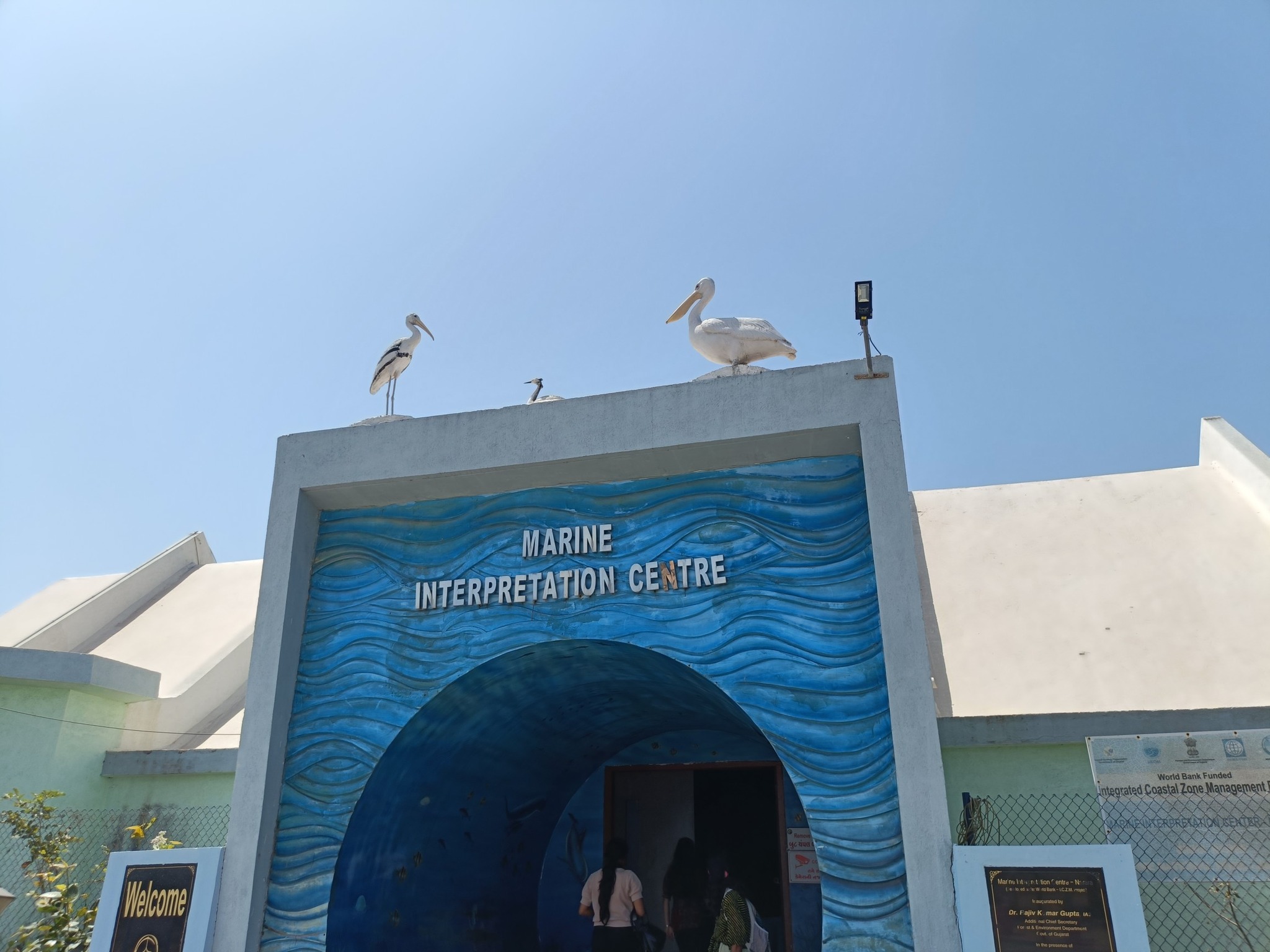

Here in Kutch Bay, India’s first marine wildlife sanctuary and marine national park were created in 1980 and 1982 respectively. This was a leap in social and governmental perceptions of how to interact with the natural world. The sanctuary covers 458 km, of which the park covers 163 km.
The reserve is located in the intertidal zone between low and high tides, submerged at high tide and exposed at low tide. This provides the opportunity to observe some of the most diverse marine habitats in the country, including salt marshes, wetlands, rocky shores, tidal flats, streams, estuaries, sandy beaches, coral reefs and mangroves. The latter two of them are not only an integral part of the local environment, but also part of the stability and diversity of the planet. Unfortunately, they are severely degraded in many parts of the world. The scarcity of pristine mangrove forest reserves remaining during the 2004 tsunami dramatically highlighted the importance of these reserves compared to open and vulnerable areas.
Pilotan, Narala, Ajad and Pojthala are home to some of the finest reef-surrounding islands that often surprise even Gujaratis. There are 52 types of coral, 42 hard and 10 soft. Corals are made up of millions of small, colorful animals called polyps, which are made up of algae and other plants in a variety of attractive shapes and structures. Polyps exhale carbon dioxide, stationary plants release oxygen, and have high nutrient turnover comparable to tropical rainforests. Rock formations provide refuge and safe breeding grounds for a variety of small marine life that hide from larger predators.
Nestled along the stunning coastline of Gujarat, the Marine National Park in Jamnagar is a treasure trove for those seeking a unique blend of adventure and tranquility in nature. With its diverse marine life, pristine beaches, and serene environment, this enchanting destination is perfect for families, solo travelers, and every nature enthusiast in between.
Established in 1982, the Marine National Park is the first marine park in India and spans an impressive 458 square kilometers. It encompasses a variety of habitats, including coral reefs, mangroves, and coastal ecosystems. The park is home to countless species of fish, crabs, sea turtles, and dolphins, making it an ideal location for wildlife enthusiasts and photographers.
Exploring the park presents a unique opportunity for visitors to witness the vibrant underwater life. Snorkeling and scuba diving are among the most popular activities, allowing you to observe an array of colorful coral formations and exotic marine species up close. Guided tours and boat rides are available, ensuring that your experience is both safe and memorable.
One of the most significant aspects of the Marine National Park is its dedication to eco-tourism and conservation. Efforts are continually made to protect the fragile marine ecosystems while providing education to visitors about the importance of preserving nature. By visiting the park, you’re not only enjoying its beauty but also supporting sustainable practices that help protect these incredible habitats.
The ideal time to explore the Marine National Park is between November and March when the weather is pleasant, and the waters are calm. During this period, the chances of spotting dolphins and other marine life increase, making it a fantastic time for photography and exploration.
When planning to visit the Marine National Park, it’s best to start your journey from Jamnagar, a vibrant city known for its rich history and culture. The park is easily accessible by various modes of transportation, and there are numerous accommodations available nearby, ranging from budget-friendly hotels to luxurious resorts.
Remember to pack essentials like sunscreen, a hat, and plenty of water. If you’re interested in snorkeling or diving, check if the equipment is provided or if you need to bring your own.
In conclusion, the Marine National Park in Jamnagar is a must-visit destination for anyone looking to connect with nature, witness stunning marine life, and contribute to conservation efforts. Whether you’re planning a long weekend or a quick getaway, this hidden gem promises unforgettable experiences that will leave you with lasting memories.
For more details on planning your visit, feel free to check out [tourmyodisaha.com], your go-to source for travel inspiration and information!
Are you ready for an adventure? Pack your bags and set out to explore the wonders of the Marine National Park in Jamnagar. Happy travels!



Here he has seven types of mangroves, which perform important functions such as maintaining the balance of salinity and freshwater systems and protecting the coast from erosion. Mangrove trees can be identified by their distinctive roots that protrude in the mud or above the water.
Mangroves are breeding grounds for colonies of critically endangered bird species such as storks, darts and black-necked ibises. These and other bird species can be found perched between branches, ready to eat fish and invertebrates that are attracted to the protein-rich leaf litter of swampy forests.Other species are shorebirds such as avosets and plovers, which are usually found in shallow waters. The third category includes fish, birds such as gulls, terns, kingfishers and ospreys, marsh he harriers, which can be seen in the open sea swooping down to catch pallas ospreys. About 80 species of birds have been recorded on these islands. At low tide each day, it’s thrilling to see the overwhelming numbers of shorebirds that congregate on the beach to feed on stranded marine life.
Marine Sanctuary is he one of the best wildlife attractions in Gujarat, showcasing the diverse marine life of the region. Marine Park is located on the south shore of Kutch Bay.
Marine National Parks provide the backdrop for the diversity of coral reef flora and fauna and mangrove growing areas. Six species of mangroves can be found in Gujarat’s marine national parks. Marine National Parks are vibrant and fascinating destinations for nature lovers.
In this region of the Gulf of Kutch, 42 different islands lie like little jewels in the middle of the Arabian Sea. The islands of the Marine National Park are a bird watcher’s paradise and a treasure trove of marine life. They are surrounded by exotic coral reefs, beautiful sandy beaches and mangrove swamps.
Of these 42 islands, the famous Pilotan Island was formerly known as Pil Jou Tan. This means the sacred place of the famous saint Khwaja Kisel Ramat Allah).





Marine National Park Wildlife The main attractions of the
Marine Reserve are Avicennia alba, Avicennia marina, Avicennia officianalis, Ceriops tagal, Rhizophora mucronata and Aegicheros corniculata.
Marine National Parks are nesting grounds for many species of birds. Egrets, egrets, crested ibises, ducks, spoonbills, seagulls and red wows can be seen in Gujarat’s marine national parks. His four-horned antelope Chowsingha, the only one in the world, can be seen in great numbers here.
Dugongs – Seal-like marine life can also be found in marine reserves, along with turtles, sponges, shrimps, eels and sea urchins. The very rare Bororo species can also be seen in the park’s reserves. Here nature lovers can see jellyfish, octopuses, starfish, colorful corals, interesting marine flowering plants, seahorses, pufferfish, giant green turtles, dolphins and lobsters
Nestled along the stunning coastline of Gujarat, the Marine National Park in Jamnagar offers a unique experience for nature enthusiasts and adventure seekers alike. This lesser-known gem is an ideal getaway for anyone looking to explore the wonders of marine biodiversity while immersing themselves in the rich cultural heritage of the region.
The Marine National Park in Jamnagar is the first marine national park in India, spanning 458 square kilometers across the Gulf of Kutch. Established in 1982, the park is home to a diverse array of marine life, including vibrant coral reefs, various fish species, and mangroves. The tranquil waters and picturesque landscapes create an enchanting setting for visitors to discover the secrets of the sea.
Whether you’re a hardcore adventurer or a leisurely traveler, the Marine National Park has something for everyone:
Explore the effervescent underwater world. Guided tours are available that cater to both beginners and experienced divers, offering a chance to swim amidst colorful fishes and admire coral formations.
Keep your eyes peeled for the park’s diverse wildlife, including sea turtles, dolphins, and migratory birds. A boat safari can enhance your chances of spotting these incredible animals up close.
The secluded beaches along the coastline provide a perfect backdrop for a peaceful day of relaxation. Collect seashells, enjoy a picnic, or simply bask in the sun.
Jamnagar is not only known for its natural beauty but also for its cultural richness. Visit the nearby local villages to understand the way of life and traditions of the coastal communities.
The best time to explore the Marine National Park is between November and March when the weather is pleasantly cool, making outdoor activities even more enjoyable. Avoid the monsoon season as heavy rains can hinder marine explorations.
Reaching Jamnagar is convenient, with regular flights and trains connecting it to major cities. Once you arrive, you can hire local transport or join guided tours that provide access to the Marine National Park.
The Marine National Park in Jamnagar is more than just a destination; it’s an experience that nurtures a love for nature while offering unforgettable memories. Whether you’re an avid diver, a wildlife photographer, or simply someone seeking solace by the sea, this park has something special in store for you. Make sure to plan your visit to this pristine haven and explore the beauty that lies beneath the waves.
For more information on planning your trip, visit [tourmyodisaha.com](http://tourmyodisaha.com). Your adventure awaits!




Welcome to a hidden gem in the heart of Gujarat – the Marine National Park in Jamnagar! If you’re looking for a unique getaway that combines breathtaking natural beauty with diverse marine life, you’ve come to the right place. This stunning national park is not only a paradise for nature lovers but also a fantastic destination for adventure seekers, families, and anyone looking to escape the hustle and bustle of daily life.
It is located along the Gulf of Kutch, offering a fascinating ecosystem that is home to a variety of flora and fauna. From vibrant coral reefs to lush sea grass beds, the park showcases a remarkable diversity of marine life. You may spot everything from dolphins to sea turtles and an array of colorful fish during your visit.
Getting to the Marine National Park is fairly easy, especially if you’re based in or around Jamnagar. Whether you’re planning a weekend trip or a longer stay, reaching the park is simple and hassle-free.
The ideal time to explore the Marine National Park is between October and March when the weather is pleasant and conducive for outdoor activities. During these months, you can enjoy boat rides, scuba diving, and snorkeling. The clear waters make it an excellent time to witness the stunning underwater life.
1. Snorkeling and Scuba Diving: Dive into the crystal-clear waters and experience the thrill of swimming with fish, exploring coral reefs, and interacting with marine life.
2. Boating: Take a boat tour around the park, which is an excellent way to appreciate the stunning landscapes and spot sea creatures.
3. Bird Watching: The area is also a haven for bird watchers. You might catch a glimpse of migratory birds that flock to the region.
4. Nature Walks: For those who prefer to stay on land, guided nature walks are available.
The preservation of the Marine National Park is critical in maintaining the diverse ecosystems that thrive within its bounds. Various conservation initiatives are in place to protect both the marine and coastal environments. As a visitor, you play a vital role in this mission by being a responsible traveler. Always adhere to park rules, avoid littering, and respect the local wildlife.
Are you ready to embark on an unforgettable journey to the Marine National Park in Jamnagar? For more information or to plan your visit, head over to [tourmyodisaha.com](http://tourmyodisaha.com). Whether you’re visiting for adventure, relaxation, or educational experiences, the park promises to leave you mesmerized and yearning for more.
Immerse yourself in the beauty of nature, witness the wonders of marine life, and contribute to the conservation of this unique ecosystem. Happy exploring!
For inquiries or additional details about touring, feel free to contact us at [item] or visit our website for more information. Your adventure awaits!
marine national park is famous for corals and sponges, giant sea anemone, pearl oyster, Portuguese man of war, starfish, dolphin, shark, jelly fish, sea horse, octopus
Gulf of Kutch is largest marine national park in india
marine national park jamnagar best time to visit in low tide
6 marine national park in india are Gulf of Kutch. Mahatma Gandhi Marine National Park, Andaman & Nicobar Islands Malvan Marine Sanctuary, Marine National Park, Sindhudurg district in Konkan region of Maharashtra.
dwarka to marine national park distance are 37 km
marine national park jamnagar contact number is 089800 29321
gulf of kutch marine national park famous for olive ridleys green sea turtles & leatherbacks